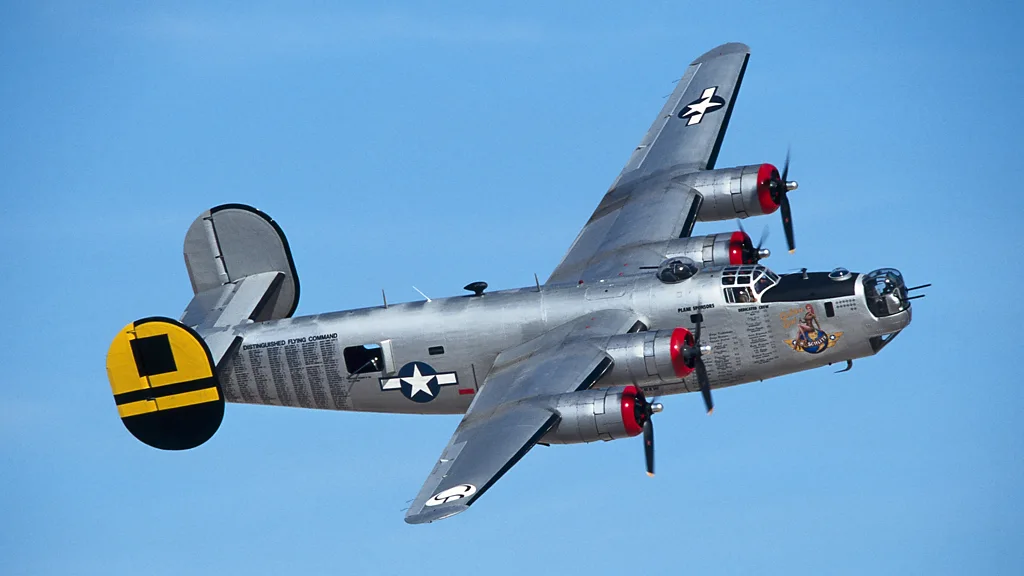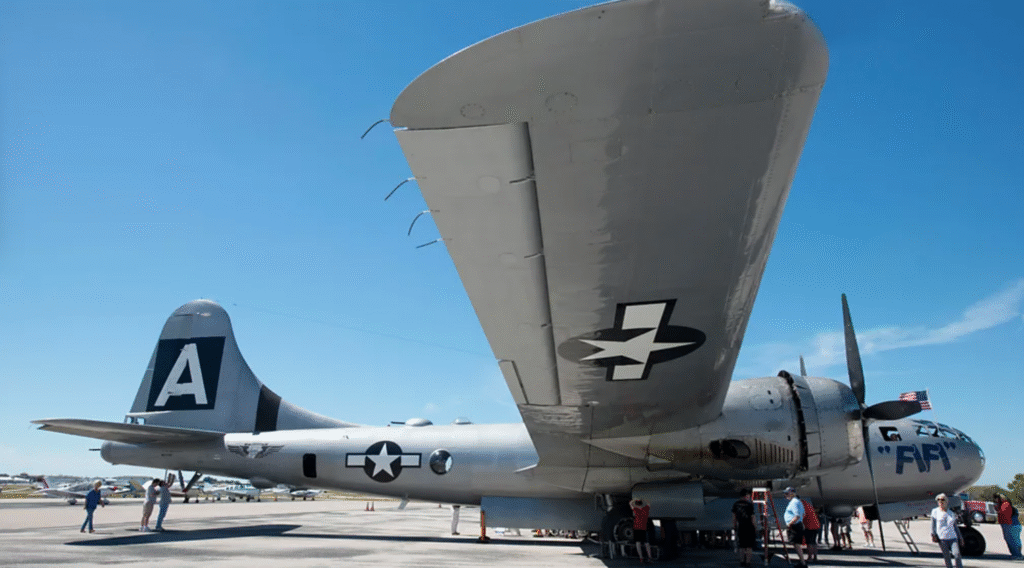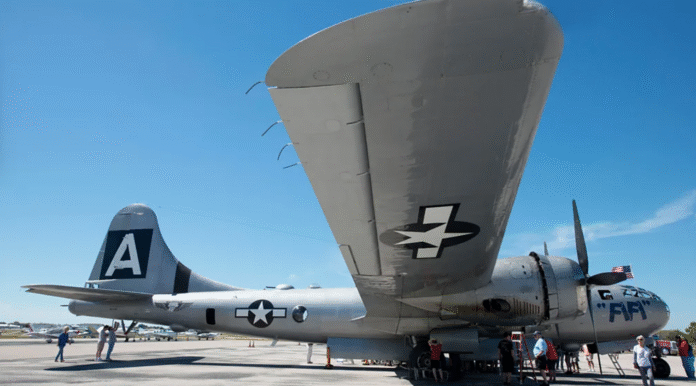B-29 Bomber Pilot: What It’s Really Like to Fly WWII’s Biggest Warbird
The B-29 bomber pilot experience is unlike flying any other aircraft in history. Known as the “Superfortress,” the Boeing B-29 was the largest and most advanced bomber of World War Two. Nearly 80 years later, just two of these legendary aircraft still fly, operated by the Commemorative Air Force (CAF) in the United States.
One of the few modern aviators with the privilege of commanding the B-29 is Randall Haskin, a veteran pilot who also flies freight jets for a major delivery company. When he’s not in a modern cockpit, he takes the controls of “Fifi,” one of the only two airworthy B-29s, giving aviation fans a chance to relive history.

The Legacy of the B-29 Superfortress
The B-29 bomber pilot flies an aircraft that once represented the peak of aviation technology. Introduced in 1945, the B-29 was the first mass-produced plane with pressurized crew compartments, allowing high-altitude missions. It could fly farther, higher, and nearly as fast as fighter planes of its time.
Building the B-29 was so costly that the program exceeded the price of developing the atomic bomb. These aircraft would later deliver those very bombs over Japan, helping bring World War Two to an end.
Flying the B-29: A Team Effort
According to Haskin, piloting the B-29 is like “leadership by committee.” Unlike most planes, the B-29 bomber pilot relies heavily on a flight engineer, who constantly manages engine power, fuel, and temperatures.
Instead of simply pushing throttles forward, the pilot must issue precise instructions to the engineer. This teamwork keeps the engines, massive 18-cylinder Wright R-3350s, from overheating or failing mid-flight. “It’s like running an orchestra,” Haskin explains, “where everyone has a role in keeping the aircraft alive.”
The Challenge of Takeoff
Despite its size and power, the B-29 feels surprisingly underpowered to modern pilots. Getting the 40-ton warbird off the runway takes patience and focus.
The B-29 bomber pilot must accelerate to around 125 mph before safely lifting off. During this window, an engine failure could mean disaster. Haskin admits that practicing emergency procedures is “a handful” and always at the back of his mind.
Yet, once airborne, the thrill is unmatched. He describes the view through the iconic glass nose as “eye-popping,” giving the sensation of skimming just above treetops.
Inside the Cockpit: Complexity Everywhere
Unlike today’s automated cockpits, the B-29 bomber pilot faces an overwhelming array of levers, gauges, and switches. Pre-flight checks can take 45 minutes or more, with every crew member on intercom to confirm procedures.
Even taxiing on the ground requires skill. The B-29 lacks nose-wheel steering, so pilots use engine power and rudder pedals to guide the aircraft. Veterans can make it look smooth, but new copilots often struggle to keep the plane straight.
The Human Connection
For Haskin, flying the B-29 is more than just an engineering challenge, it’s personal. His father was a B-29 flight engineer in the 1950s, and Haskin grew up hearing stories of the Superfortress.
Now, as a B-29 bomber pilot, he shares those memories with passengers who climb aboard during CAF airshows. The flights are short, usually 20–30 minutes, but they let people smell, hear, and feel what it was like for WWII crews.
He calls the CAF a “flying museum” dedicated to preserving the legacy of the “greatest generation.”
Comparing the B-29 With Other WWII Bombers
Haskin has also flown the B-24 Liberator, the most produced U.S. bomber of World War Two. While he respects its history, he describes it as “the worst airplane I’ve ever flown” due to its sluggish handling.
By contrast, the B-29, while demanding, feels more refined. Its pressurized cabin, advanced design, and heavy firepower made it a technological leap forward. For a B-29 bomber pilot, that difference is clear every time he switches between the two aircraft.
Pop Culture and Design Influence
Interestingly, the B-29’s cockpit design left its mark on pop culture. Star Wars fans may recognize its influence: the glazed nose and crew layout inspired the design of the Millennium Falcon’s flight deck.
This gives modern audiences yet another way to connect with the aircraft, through cinema and imagination.

Keeping the Superfortress Alive
Maintaining the B-29 requires constant dedication. Its engines remain temperamental, and parts are scarce. The CAF operates both surviving airworthy aircraft, “Fifi” and “Doc,” ensuring they appear at airshows nationwide.
For every B-29 bomber pilot, the responsibility is enormous. Each flight isn’t just for entertainment, it’s about keeping history alive, honoring those who built and flew these giants in the 1940s.
Conclusion: Why the B-29 Still Inspires
Flying the B-29 is not just about nostalgia. It’s about preserving a living connection to aviation history and the sacrifices made during WWII. The B-29 bomber pilot doesn’t just fly a machine; he carries forward the legacy of innovation, courage, and teamwork.
For passengers, watching or riding in the B-29 is a rare privilege. For pilots like Haskin, every flight is a reminder of the resilience of both the aircraft and the people who built and flew them.

